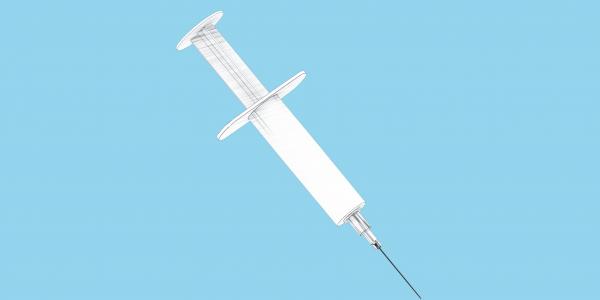
What Is Milia And How Can You Treat It?
If you’ve ever examined your skin up close in the bathroom mirror and spotted small white bumps, dotted under your eyes or across your cheeks, that won’t pop despite your many attempts, you may have milia. Often mistaken for whiteheads, the bumps are mostly undetectable and can cause little issue day-to-day.
But whether you have it or are unsure, or want to know the treatments that work and are available to remove them, I spoke to two skin specialists, Dr Anjali Mahto, Consultant Dermatologist at Skin55, and Pamela Marshall, Clinical Aesthetician and founder of Mortar & Milk, who share their expertise to help you in the pursuit for the healthiest skin possible.
What is milia?
Dr Mahto explains, “Milia are small white bumps or cysts that appear on the surface of the skin when dead skin cells become trapped. They are made up of keratin, a protein on the outer layer of the skin, and whilst they resemble whiteheads, they are not related to acne or infection and are simply a pocket of normal skin.”
Because milia and whiteheads differ, how they develop and therefore be effectively treated contrasts too. Marshall shares that a whitehead is a dome-shaped lesion that can turn into a larger pustule. “Milia, on the other hand, do not generally get infected and are more difficult to remove,” she says.
Milia also sticks around longer on the skin says Marshall. This is because of the build-up of keratin in a pore becomes sealed-off by epidermal cells, the outer layer of skin, and this seal is what makes the removal process more complex than simply squeezing it like you would a spot.
What causes milia?
“Milia on the face are usually formed spontaneously, and there are a number of factors that contribute,” Mahto states, who goes on to say, “Milia found around the eye area can be caused by heavy creams, where the skin around the eye is much thinner than other areas of the face. It can also occur on the nose and other areas of the body.”
Milia tends to occur as a result of skin damage – predominantly sun damage – as well as rashes and excessive use of harsh products on the skin.”
How can it be treated?
While milia can create a bumpy texture on the skin, Dr Mahto advises that it doesn’t need to be treated unless you are concerned about them, and there are products you can use at home to help minimise it. “Fewer dead cells means fewer unsightly bumps, gentle exfoliation allows the dead skin cells to be removed, resulting in much less build up,” says Mahto, recommending superficial peels containing non-abrasive AHA’s and BHA’s, including glycolic and salicylic acid as a first step. “They provide accelerated, chemical exfoliation without the need to aggressively scrub your skin and only lift off the top layer of skin.” Retinoid creams can also be used for widespread problem areas, as can chemical peels.
However, to have milia completely removed can be done in a professional setting and is not something that should be attempted at home. Marshall reveals that often people at home will use a needle to puncture the skin and then squeeze out the bumps, but as there is no guarantee that the needle is totally disinfected, so you’re at risk of infection while also squeezing out something so hard, could cause scarring.
There is also a menu of treatments to choose from in a clinic, but all should be undertaken by a qualified dermatologist or aesthetician, as they can recommend the most appropriate route to take. “The best type of treatment will also depend on the type of milia you have, as well as the number and location on the face,” Mahto says. “Before having any procedure done, especially an extraction, it is best to book a consultation with a qualified dermatologist (check their credentials on the General Medical Council Register beforehand), to see what will be best for you and your skin type.”
According to Mahto, the most common removal is via ‘de-roofing’, where a sterile needle is used to create an incision in the skin, making way for careful extraction. ‘If you have tried the usual exfoliation, chemical peels and retinol methods then electrodessication treatment is also available. This process uses electricity, and a fine metal electrode or probe to heat the skin and to destroy the milia.”
DISCLAIMER: The views, opinions and information expressed in this article and on Victoriahealth.com Ltd are those of the author(s) in an editorial context. Victoriahealth.com Ltd cannot be held responsible for any errors or for any consequences arising from the use of the information contained in this editorial or anywhere else on the site. Every effort is made by the editorial and content team to see that no inaccurate or misleading information, opinion or statement appear, nor replace or constitute endorsement from medical bodies or trials unless specified. Victoriahealth.com Ltd accept no liability for the consequences of any inaccurate or misleading data, information, opinion or statement. Information on Victoriahealth.com Ltd and in the editorials is provided for informational purposes only and is not intended as a substitute for the advice provided by your physician or other healthcare professional. You should not use the information on this website or in the editorials for diagnosing or treating a health concern or disease, or for the replacement of prescription medication or other treatment.